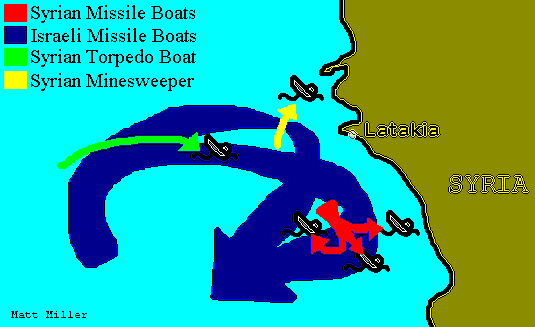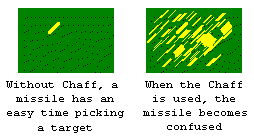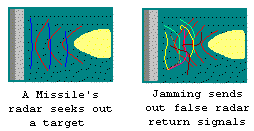Yom Kippur War: The Battle of Latakia
(October 7, 1973)
Few naval battles change the course of maritime warfare. Of those that do, a very select group ever become recognised as doing just that. Perhaps these engagements change the balance of world power, as was the case with Trafalgar. Or maybe these milestones bear witness to the introduction of a totally new concept in the conduct of naval warfare; as was the case at Midway.
The battle of Latakia did two things: it proved to the world that the Israeli Navy was up to par with its bretheren in the Air Force and Armored Corps, and it was the first naval battle in the history to see actual missile combat conducted and electronic warfare deception measures taken. The battle of Latakia demonstrated to the world the power of the fast attack craft and the effectiveness of missile evasion techniques. The small skirmish off of the Syrian coast during the first moves of the YomKippur War was a sign of things to come in naval warfare and changed the way that navies saw themselves in their ever-deadlier environment.
 |
During the first day of hostilities, the Israeli Navy was dispatched to lure the Syrian missile boats out of port and engage them. Anumber of things made this order difficult:
- The Israeli anti-ship missile, the Gabriel, had yet to be used in anger. Its performance against a real-life hostile target was as of yet unknown.
- The Gabriel had only half of the effective range of the missiles the Syrians were using,the Soviet SS-N-2 Styx; a missile which had already sunk an Israeli destroyer six years earlier.
- The Israeli defenses against the Styx consisted of electronic counter measures which had never been used in any real-life engagement. If they failed, the Israeli boats would be easy prey for the radar-homing Styx missile.
These challenges notwithstanding, an Israeli task force, operating in two parallel columns of three ships out at sea and two more closer to the shore, swung right towards the Syrian port of Latakia. On their radar screens, a surface contact appeared due north of their position. Unsure of its intent, the Israelis fired a battery of 76mm shells over its bow, to which it responded with desultory 40mm fire. Contact had been made.
Michael Barkai, the officer in charge of the operation, ordered the Hanit out of the three ship column to engage the Syrian torpedo boat, now positively identified. The Syrian was easily sent down to the bottom, picked off at extreme range by the Hanit's 76/62 gun. Not knowing whether the lone PT boat had reported their position, the Israelis hurried for the shore and braced for the coming showdown.
As the Israelis headed towards the shore, another radar contact was picked up, this time twenty five kilometers northeast of their position. One of the Israeli boats fired a snap shot Gabriel, but because the target was running for the shore and drew itself out of range, the missile dove ineffectually into the sea. But the chase still continued, and once in range the Reshef, in the starboard column, fired a Gabriel at eighteen kilometers range which struck the 560-ton Syrian Minesweeper dead on. But the Israelis knew that the real challenge was the Styx, not some vulnerable hulk of a vessel. The Israelis continued their dash towards Latakia.
Three contacts appeared on the radar screens as the Israelis neared the coast. They were Syrian missile boats, one Osa and two Komars, which had come to meet the interlopers. As the Israelis approached, the Syrians fired their missiles at a range from which the Israelis could do nothing. Once the missiles drew closer, however, the Israelis began firing their chaff rockets and used the jamming systems on board their ships to send out false radar signals to the incoming missile in an attempt to confuse its on-board computers. All of this technology was Israeli-developed and produced, and this was the first time it had ever been used in actual combat.
  |
As the Styx missiles drew closer, it was apparent that all of the electronic defenses had worked - the missiles either flew harmlessly overhead or dove into the water. The Israelis pressed on with their apporach, confident in themselves and in their boats. The tactics that the Israelis had invested so much in were sound:approach stealthily, and let your opponent fire his missiles at maximum range as you close; as the enemy missiles near your position engage your deception countermeasures and hope for the best.
Only one Syrian boat still had missiles left - the Osa. It turned to face the Israeli flotilla as the two Komars made their mad dashes towards the protection of Latakia. But it would be to no avail. The Israelis closed at full speed, and let loose a devastating salvo of Gabriel missiles and managed to defeat two more Styx missiles with their chaff and jammers. The 150kg warhead on the Gabriel was more than enough to destroy the missile boats, and they sank quickly. After Latakia, the Syrian navy would be bottled up in its home ports. Acorner in naval warfare had been turned.
The Israeli navy, previously a fifth-rate mess of floating hand-me-downs, had proven itself at a time when even the vaunted Air Force and Armored Corps could not. The Israeli innovations in the use of chaff and radar jammers set a precedent in the way ships defend themselves still to this day.Indeed, even the Arab navies now employ the same techniques that the Israelis found so useful off of Latakia. The Israeli-designed Gabriel worked flawlessly. It was able to pick up small targets and, although its range was limited, it was able to earn a name for itself in the war rooms of nations everywhere; today it is employed by Taiwan, Sinagpore, SouthAfrica, and many others. Due to actions like the one off of the Syrian coast on October 7, 1973, the Israelis have made a name for themselves in the field of missile boat warfare and have proven themselves capable of not only joining the elite of military trendsetters but also of leading that prestigious group.
Sources: The Israeli Navy (Tzva Hagana L'Yisrael Heyl Ha'Yam )


